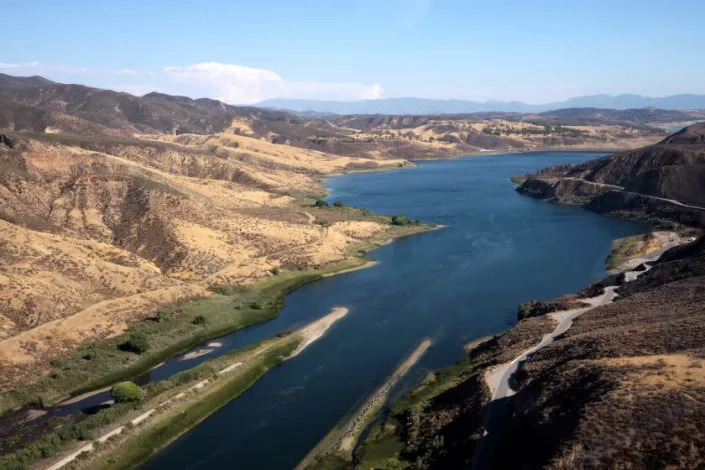 T.H.E.M.
¨We believe in the judgment; we believe this first judgment will take place as God revealed, in America...¨
T.H.E.M.
¨We believe in the judgment; we believe this first judgment will take place as God revealed, in America...¨
 T.H.E.M.
¨We believe in justice for all, whether in God or not; we believe as others, that we are due equal justice as human beings.¨
T.H.E.M.
¨We believe in justice for all, whether in God or not; we believe as others, that we are due equal justice as human beings.¨
Los Angeles is running out of water, and time. Are leaders willing to act?
Eric Garcetti
Hayley Smith

On a clear afternoon recently, Mayor Eric Garcetti looked down at the Hollywood Reservoir from 1,200 feet in the air.
“It’s as low as I can ever remember it being,” Garcetti said of the reservoir from the back seat of a Los Angeles Department of Water and Power helicopter. “You can see the bathtub ring.”
The aerial survey of L.A.’s water infrastructure came at a critical moment. Over the last decade, the city has made significant investments in its future, including major projects to expand its ability to capture, store and recycle water. But now, on the eve of an election, much of the work remains unfinished — with target dates for some major water projects set as far as 2050.
With the city facing what is sure to be one of the hottest, driest and most challenging climate eras on record, it is essential that its next leader sees the work through to completion, Garcetti said.
“It’s not an easy path, it’s not a cheap path, but it’s achievable,” he said. “And if he or she doesn’t do it, we’re in big trouble.”
By now, it is clear that water independence is the best path forward for the 4 million residents of the city of Los Angeles, and for the county and region as a whole. Imported supplies from the State Water Project are heavily dependent on annual snowpack and rainfall in the Sierra, which are no longer a guarantee under the state’s shifting climate regime. What’s more, long-reliable federal supplies from the Colorado River are rapidly drying up, with the river’s largest reservoir, Lake Mead, nearing dangerously low levels.
In certain ways, the city is in better shape than some other major metropolitan areas because of the Los Angeles Aqueduct system, two pipelines that deliver water from the Mono Basin and Owens River hundreds of miles away. But even that supply — much of it secured by stealth and deception more than 100 years ago — is heavily reliant on Sierra snowmelt.
“The reality is most Angelenos, most people, haven’t thought about water their entire lives because it’s been reliable,” said Evelyn Cortez-Davis, director of water engineering and technical services at the DWP. But as the helicopter zoomed over the area’s drought-dried hills and heat-sapped reservoirs, the urgency of the work came clearly into focus…….Story continues
Click here for reuse options!Copyright 2022 Hiram's 1555 Blog
